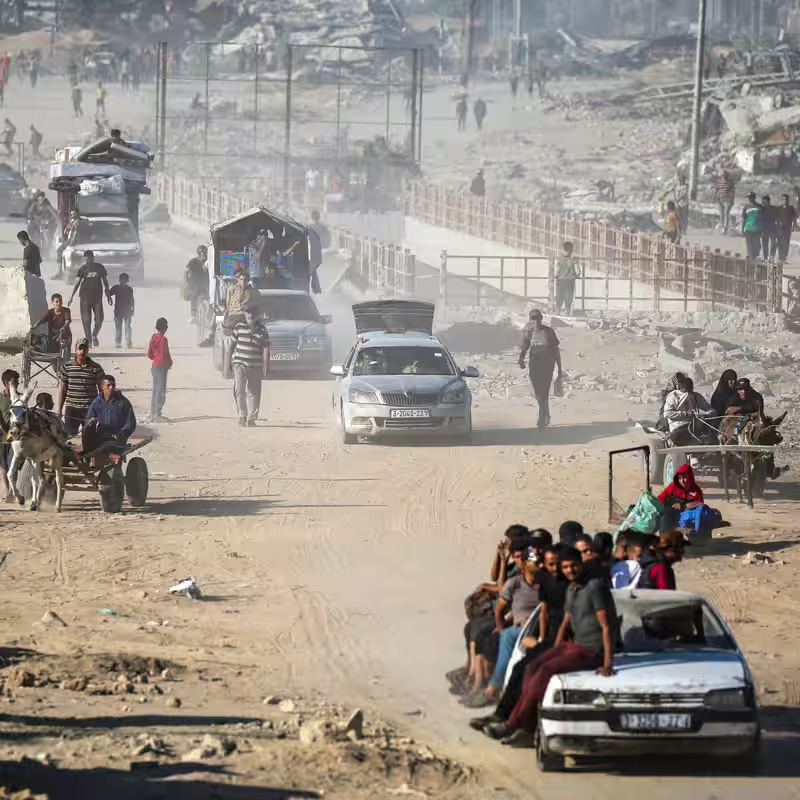Under a fragile truce and skies finally free of bombardment, a human tide has begun flowing back into northern Gaza. Driven by hope, desperation, and an unbreakable bond to their homeland, tens of thousands of Palestinians are returning to a place that, for many, exists now only in memory.
A Journey Back to Nothing
On Saturday, October 11, 2025, families who had spent months in displacement camps in southern Gaza packed their few remaining belongings and made the long, arduous journey north. Their destination: Gaza City, a once-vibrant urban center now reduced to a haunting landscape of rubble and ruin. The ceasefire, brokered by the United States, has held overnight, offering a sliver of safety for this perilous homecoming .
The scale of the return is staggering. Gaza’s Hamas-run civil defence agency estimates that around 200,000 people have already made their way back to the north since the ceasefire was announced . For many, the journey is a leap of faith. They are returning not to a home, but to the ghost of one.
Gaza Returns: What Survivors Found
The reality on the ground is a brutal counterpoint to their hope. Entire neighborhoods have been erased. Landmarks that once defined a community—a school, a mosque, a local market—are now just piles of shattered concrete and twisted metal. The few buildings left standing are often structurally unsound, their interiors gutted by fire and blast.
One returning resident, Ahmed, stood silently in front of a mountain of debris that was his family home just a year ago. “I just wanted to see it,” he said, his voice barely a whisper. “Even if it’s gone, this is where my children were born. This is our land.”
The Immediate Challenges
The challenges facing these returnees are immense and immediate:
- Shelter: With most homes destroyed, families are forced to live in the open or in makeshift tents amidst the ruins.
- Water and Sanitation: The water infrastructure is decimated, creating a severe risk of disease outbreaks.
- Food Security: Local markets are gone, and supply chains are broken, leaving many without reliable access to food.
- Unexploded Ordnance: The area is littered with unexploded bombs and munitions, making every step a potential danger.
Why They Came Back Anyway
Despite the devastation, the pull of home is a force stronger than fear. For many, the south offered only a temporary, overcrowded refuge. Returning north, even to ruins, is an act of reclaiming their identity and their future. It is a statement that they will not be erased.
This mass return also serves as a powerful, silent testament to the world. By coming back, these families are demanding that their story not end in displacement. They are laying the first, painful bricks of a future reconstruction, even before the first official aid truck has arrived.
The Road Ahead
The ceasefire offers a critical window, but it is just that—a window. The long-term stability of this truce is uncertain, and the path to rebuilding a shattered society is a generational challenge. The international community now faces a monumental task: to provide not just emergency aid, but a sustained commitment to help a people rebuild their lives from the ground up.
The story of Gaza’s return is not just about destruction; it’s about an indomitable human spirit. It’s a story of people who, faced with the loss of everything, choose to stand on the ground where their home once was and declare, “We are still here.”
Sources
- The New York Times: Thousands Return to Northern Gaza, Hopeful, but Faced With Devastation
- Al Jazeera: Gaza City residents return as Israel says ceasefire has held
- Reuters: Tens of thousands of Palestinians return to northern Gaza after ceasefire deal
- BBC News: Thousands of Palestinians return north as Gaza ceasefire begins




